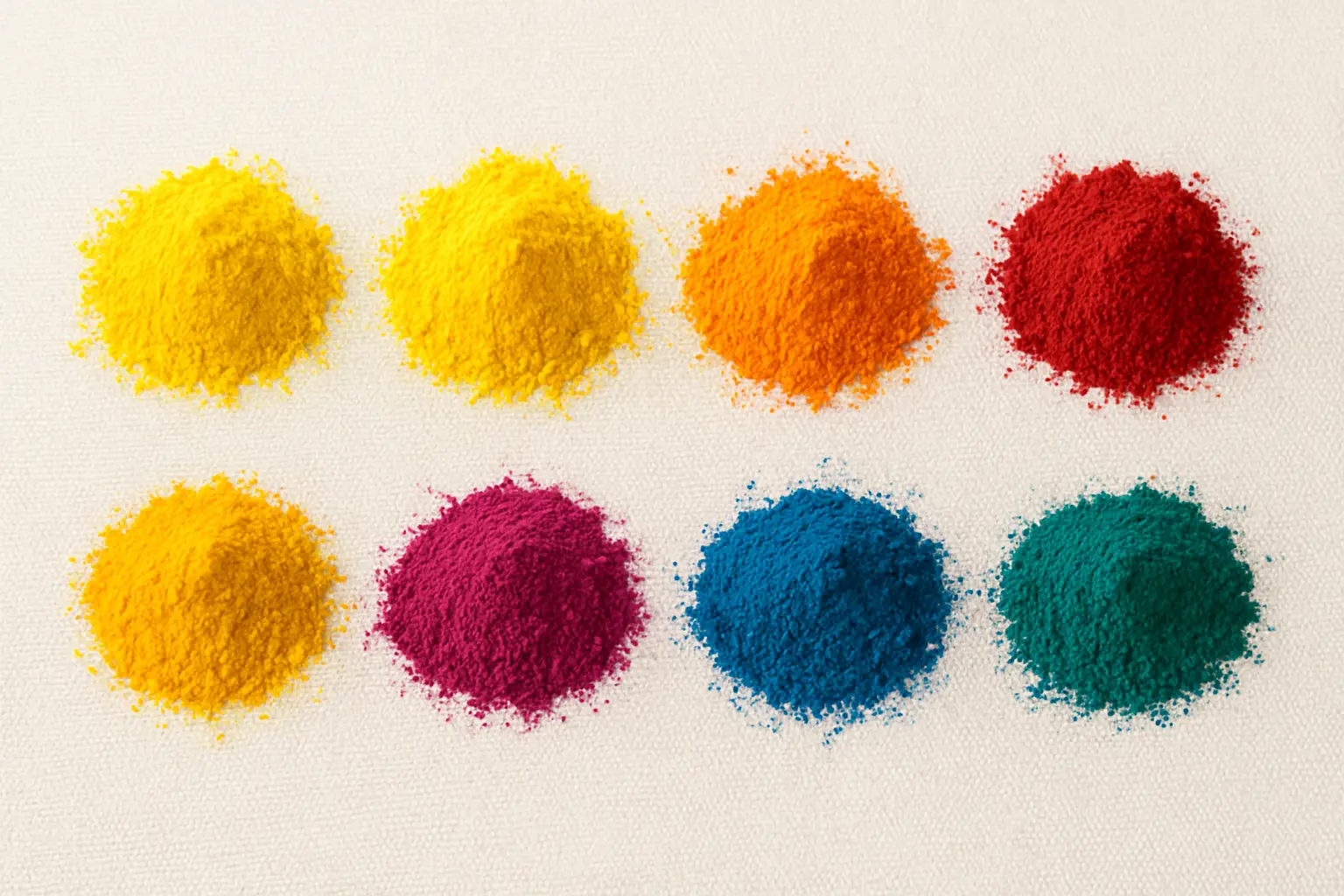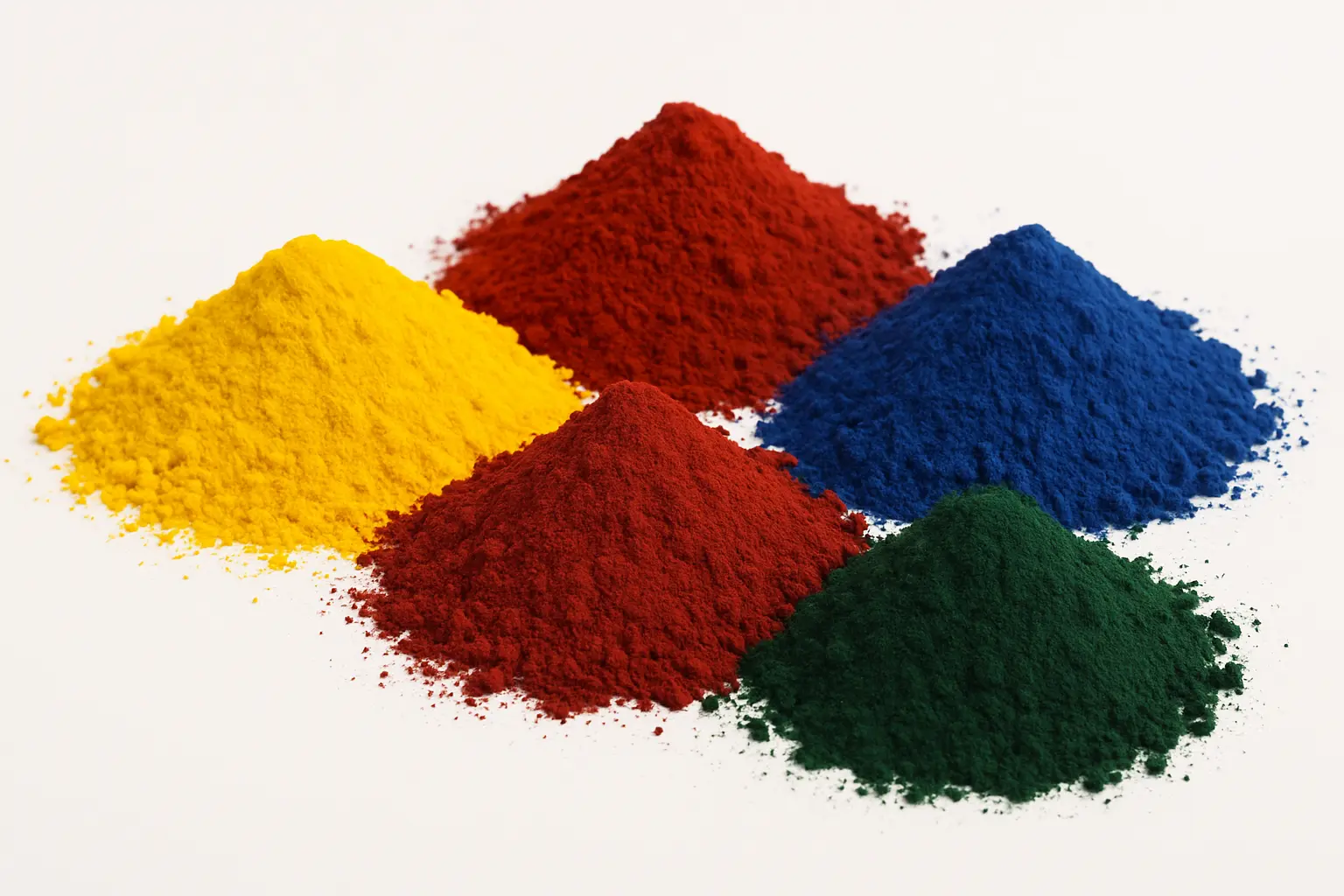天然着色剂是从植物、动物或矿物等天然来源中提取的色素。它们被广泛用作食品、化妆品和药品等行业合成染料的替代品。虽然它们有很多好处,但也有一些局限性需要考虑。

天然着色剂的优点
- 更高的安全性
与合成染料相比,天然着色剂通常被认为更安全,尤其是在食品应用中。由于它们来自可食用的植物或动物,因此过敏或毒性风险较低。例如,甜菜红和类胡萝卜素不仅可以提供颜色,还可以提供营养价值。 - 环保
天然色素的生产对环境的影响较小。原材料是可再生的,提取过程所需的化学处理较少,从而减少了对环境的影响。天然色素生产产生的废物更易于管理,对环境的危害也较小。 - 消费者偏好
随着消费者越来越注重健康和环保,对含有天然成分的产品的需求也日益增长。天然着色剂被认为更健康、更“清洁”,因此在食品和化妆品行业很受欢迎。标明使用天然着色剂的标签往往受到消费者的青睐。 - 健康益处
一些天然色素不仅能提供颜色,还能带来健康益处。例如,类胡萝卜素(产生橙色和黄色色调)具有抗氧化特性,有助于保护细胞免受自由基损伤。花青素(蓝色和紫色色素)可以改善血管健康、减少炎症并提供抗氧化益处。
天然着色剂的缺点
- 稳定性较低
天然色素对光、热、氧气和 pH 值变化等环境因素更敏感,导致其褪色或失去活力。例如,番茄红素(存在于番茄中)对光和氧气高度敏感,这会在储存过程中降低其颜色。需要特殊的包装和储存条件来保持稳定性,这增加了生产的复杂性和成本。 - 颜色范围有限
天然来源的可用颜色有限,尤其是鲜艳的蓝色、绿色和黑色。这限制了天然色素在某些应用领域的使用。例如,生产色彩鲜艳的糖果或包装设计通常需要合成染料来获得明亮、多样的颜色,而天然色素无法轻易实现。 - 成本更高
由于加工过程复杂且产量有限,提取天然色素需要大量劳动力且成本高昂。此外,天然色素的供应可能不稳定,受季节和环境因素的影响,进一步推高了成本。例如,藏红花和胭脂红的生产成本都很高,因为提取过程需要大量劳动力。 - 潜在的气味或味道问题
一些天然着色剂会保留其原料的气味或味道,这可能会影响最终产品的感官品质。例如,以螺旋藻为基础的蓝色色素可能会有轻微的海藻气味,这在某些食品或化妆品中是不受欢迎的。
天然着色剂的应用领域
- 食品工业
天然着色剂广泛用于食品中,以增强外观和吸引力。常见的例子包括:- 甜菜红:用于肉制品、饮料和冰淇淋中,以产生红色或粉红色调。
- 辣椒油树脂:用于酱汁、调味品、火腿和香肠,使其呈现鲜红色。
- 类胡萝卜素:用于乳制品、饮料和烘焙食品中,呈现橙色和黄色色调。
- 黄酮类化合物:从柑橘类水果中提取,用于糖果和饮料中以提供黄色色调。
- 叶绿素:应用于饮料、糖果和乳制品以营造绿色色调。
- 化妆品行业
天然着色剂在化妆品中很受欢迎,尤其是口红、腮红、粉底和眼影。消费者青睐天然成分,因为它们对皮肤有益,而且刺激风险较低。例子包括:- 胭脂红:从胭脂虫中提取的红色染料,常用于口红和腮红。
- 花青素:从蓝莓和紫甘蓝中提取,用于眼影和腮红,呈现紫色或蓝色色调。
- 矿物颜料:如二氧化钛和氧化铁,用于粉底和遮瑕膏,打造自然肤色。
- 制药行业
天然着色剂可用于给药片和胶囊等药品着色,有助于区分药物并提高患者依从性。示例包括:- 类胡萝卜素:用于软胶囊和片剂包衣,提供鲜艳的色彩,提高市场认可度。
- 叶绿素铜:应用于药丸涂层,提供绿色色调,同时提高产品的稳定性。
- 红曲米:用于药物涂层以提供红色或紫色色调。
- 纺织染料
虽然合成染料在纺织行业占据主导地位,但天然着色剂仍在小众市场使用,尤其是环保和可持续时尚。示例包括:- 靛青:从靛蓝植物中提取,用于将牛仔布和其他织物染成蓝色。
- 茜草根:一种用于给织物染色的天然红色染料。
- 姜黄素:从姜黄中提取,用于纺织品中的黄色或橙色色调。
天然着色剂的未来趋势
随着环保意识和消费者对天然、健康产品的需求不断增长,天然着色剂的应用范围正在不断扩大。未来的主要趋势包括:
- 技术进步:微生物发酵、酶反应等生物技术正在提高天然色素的稳定性、产量和成本效益。
- 跨行业应用:除了在食品、化妆品和药品中的传统用途外,天然着色剂还在包装材料和环保涂料等领域得到探索。
- 功能扩展:除了着色之外,天然色素还因其抗氧化和抗衰老等健康益处而被开发,这为功能性食品和补充剂的开发提供了机会。
有关天然着色剂及其如何增强产品配方的更多信息,请访问 WPA Chem 网站.









